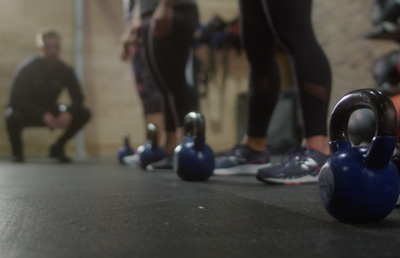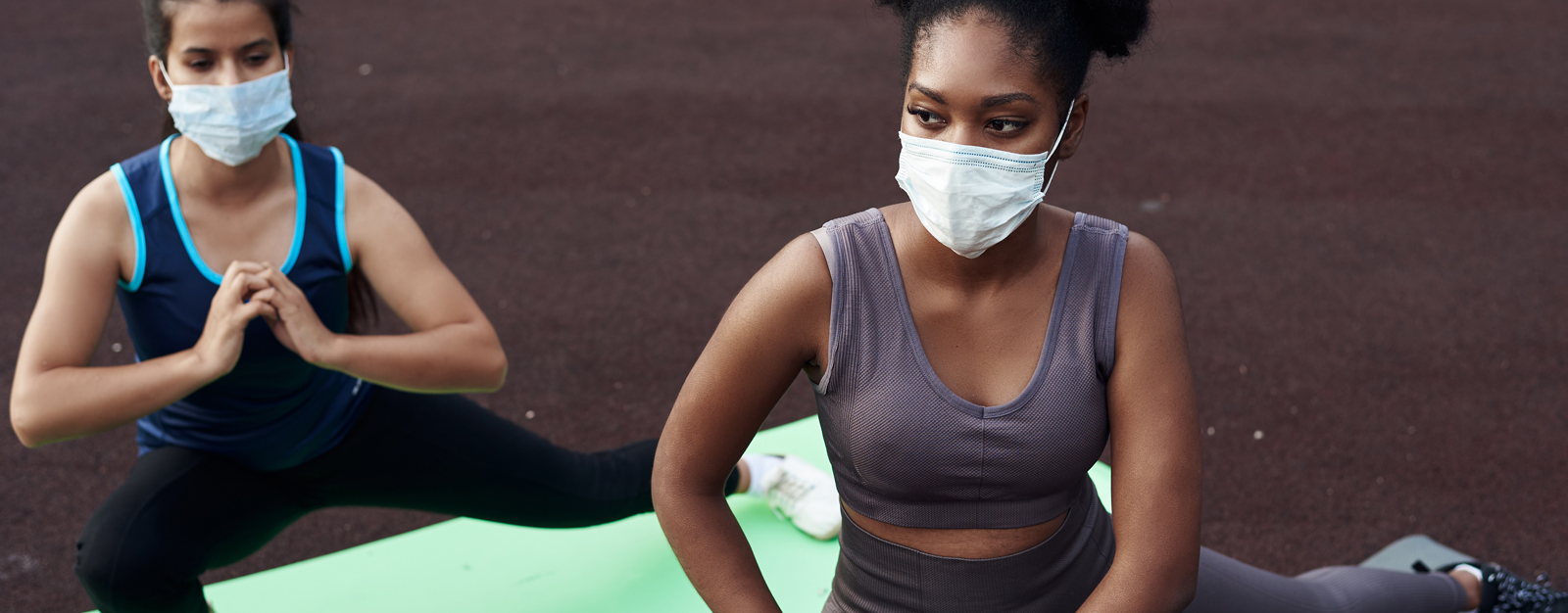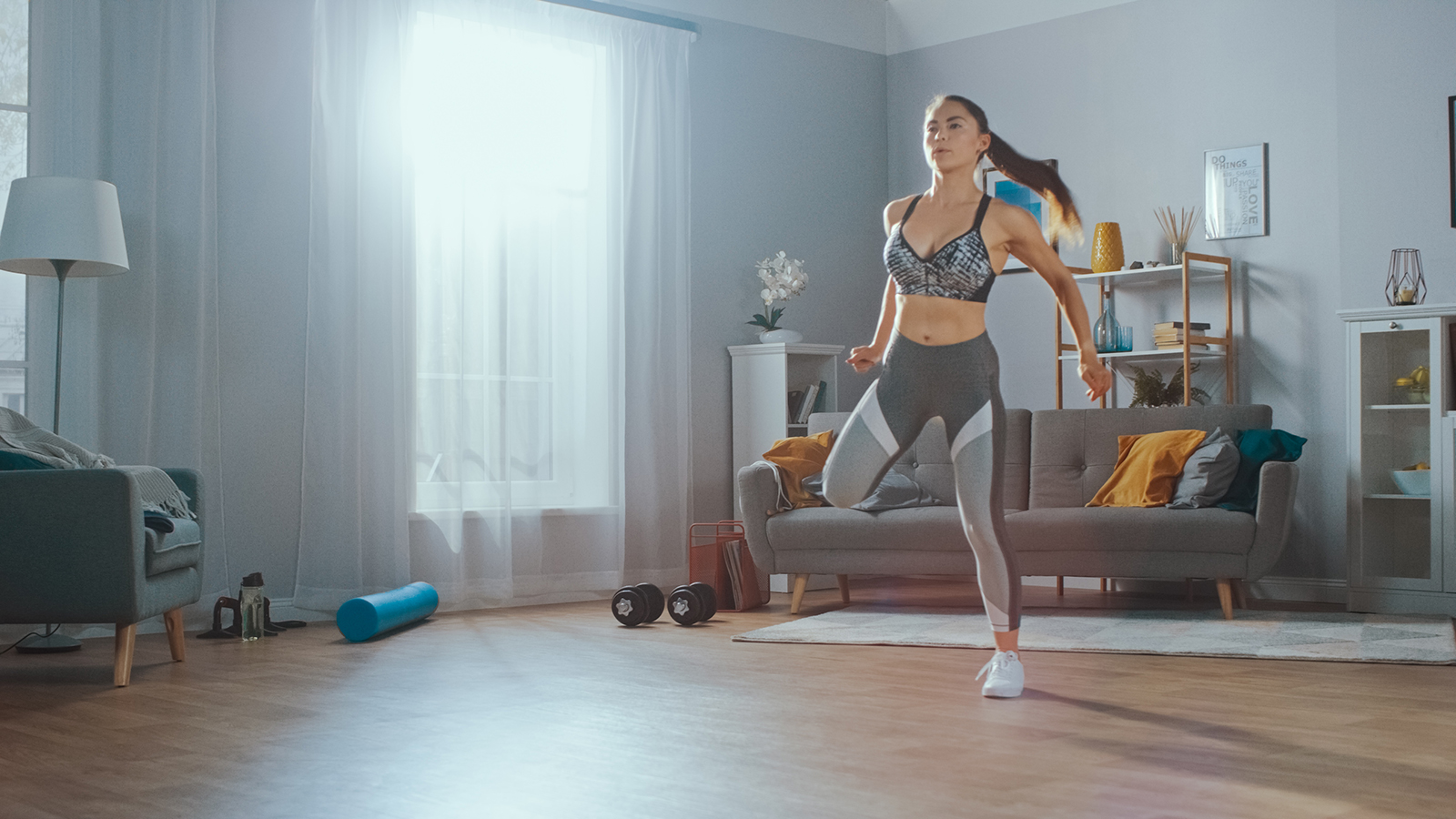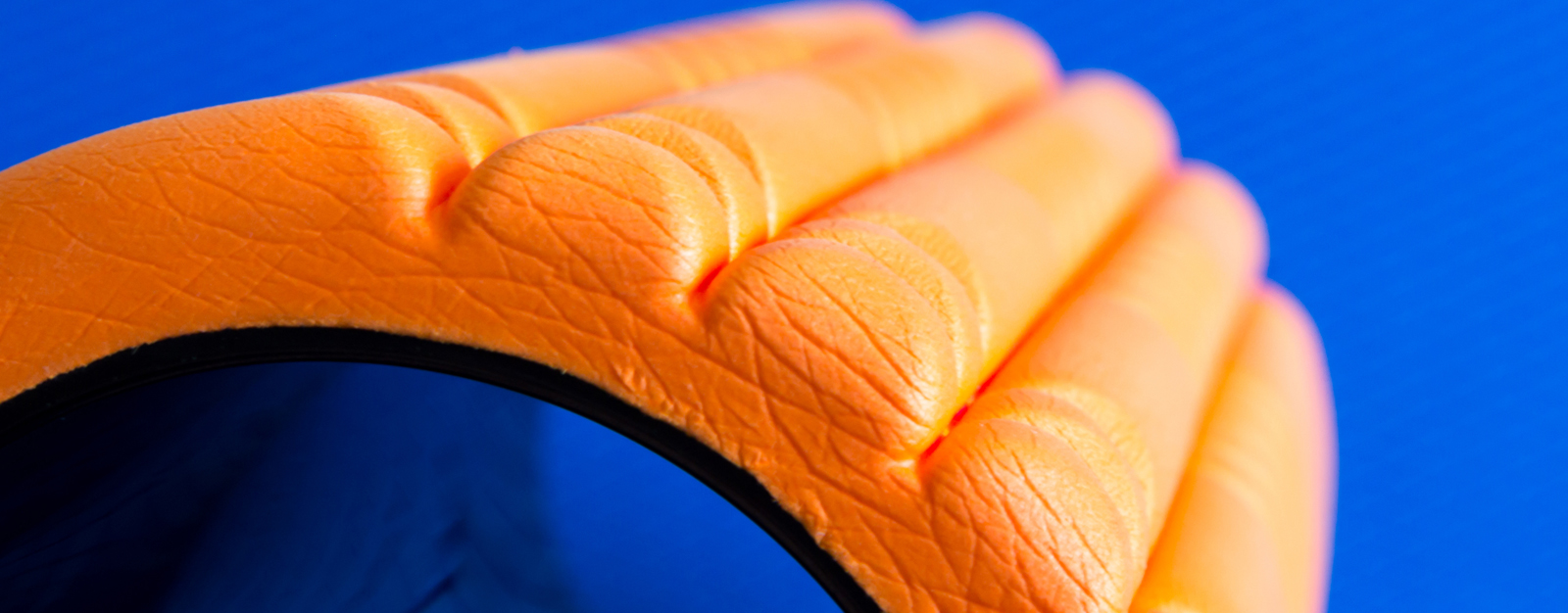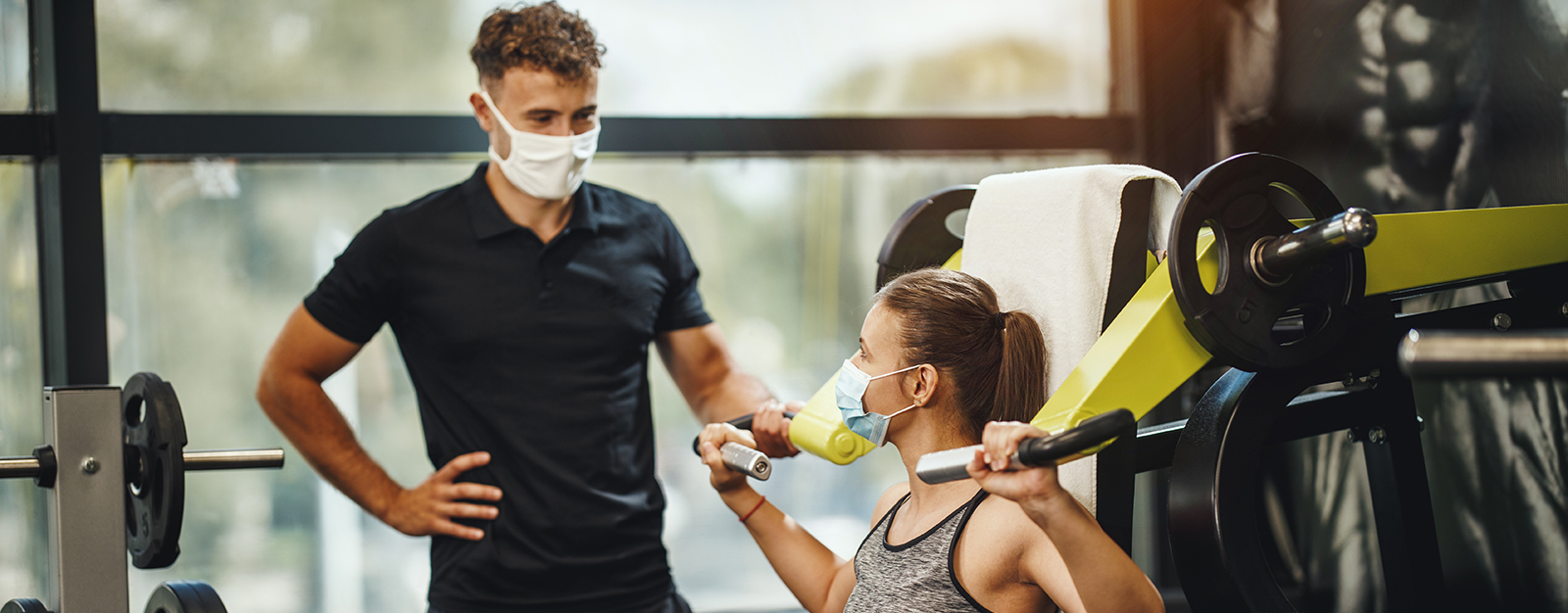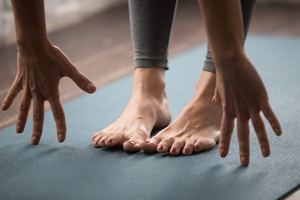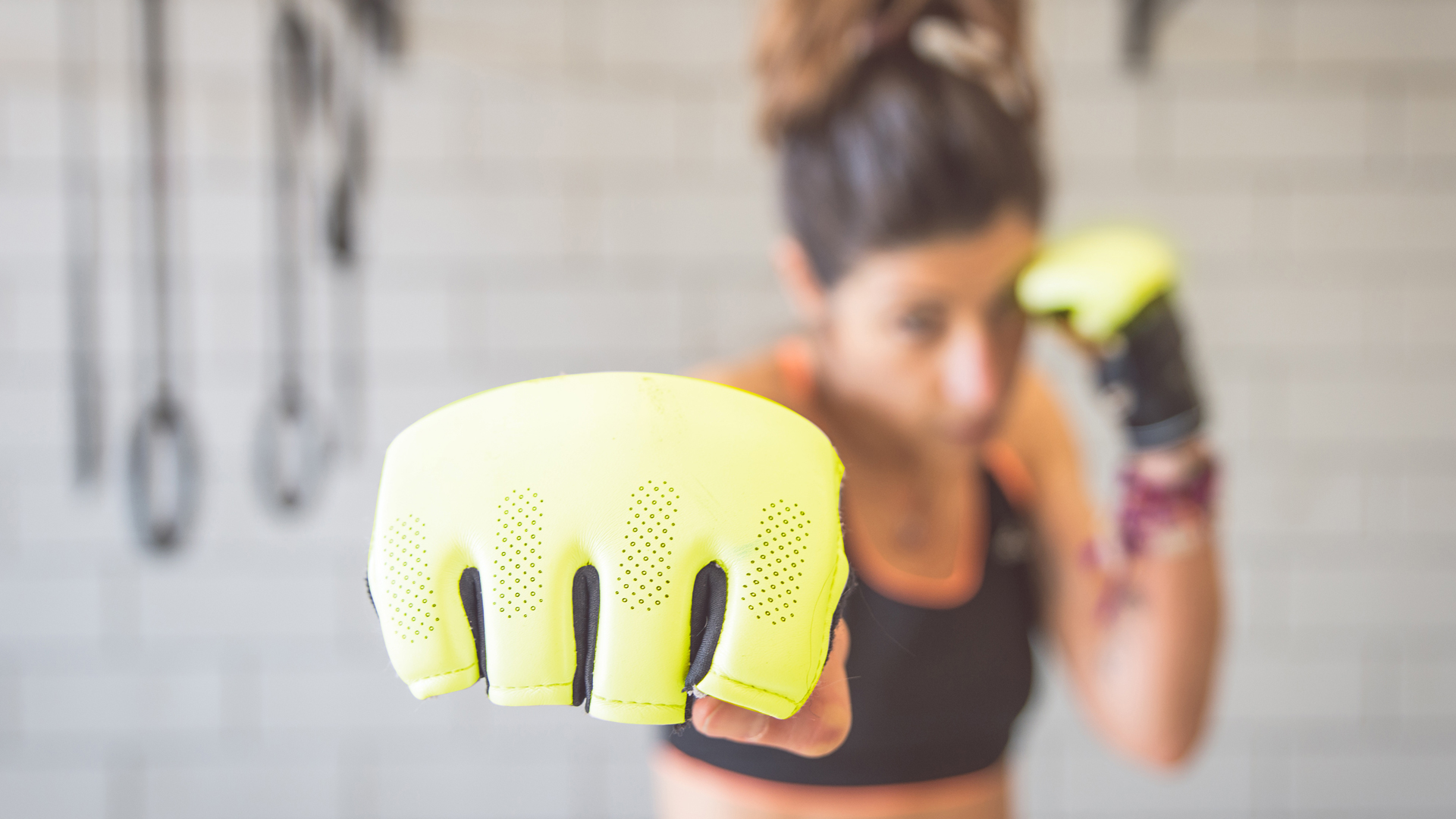If your results haven’t been what you were expecting, or if you’re shaking off the last of the winter blues, resistance training might be just the thing for you.
Continue readingThe Year the World was Reinvented
A message from the VENT Fitness President.
Continue readingKeeping up Traditions in Uncertain Times
The Holidays feel weird this year, there’s no denying it. But what’s weird can also be wonderful, with a little resiliency and ingenuity.
Continue readingThe Anti-depressant Effects of Fitness
Fitness can do more than just build your confidence or help you drop and gain pounds. Turns out, it’s just the superhero we need.
Continue readingFitness Fights Disease
Fitness can do more than just build your confidence or help you drop and gain pounds. Turns out, it’s just the superhero we need.
Continue readingMobility is Not a Punchline
Mobility workouts are not a cheat day, they’re a necessary part of improving your performance. Find out more.
Continue readingWearing a Mask While Working Out
The type of mask you choose can make or break your workout. Find out how to pick the right one for you!
Continue readingCoping with Anxiety and COVID-19

Coping with Anxiety during COVID-19 Isolation
By nature, humans are social creatures. As the species has evolved, being in groups has proven beneficial not only for behavioral development and education, but also for survival. Studies have shown that social interaction influences us in a neurobiological sense, releasing or enhancing certain hormones and physiological responses. With the recent “shelter-in-place” mandates in New York State and elsewhere, this newfound isolation and suspension of common routines has thrown the population into new and uncharted waters, the impact of which we are only just now beginning to realize.
“Humans thrive on routine,” explains Sociology and Psychology teacher Rose Gorman, a VENT Fitness member who teaches at Troy High School. Her efforts in the recent shelter-at-home environment have been primarily focused on keeping her students engaged in the new online teaching environment, while simultaneously turning their attention to both the societal and historical impacts of the COVID-19 outbreak. “This dramatic break in routine can not only cause anxiety for people who are already prone to it, but can also manifest in people who don’t typically deal with it.”
While most scientists can agree that social interaction is crucial to the human existence, there is little known about the neural (read: functions of the brain) factors that are behind that need. And while the advent of video chat has been helpful in connecting humans in times of distance, the simple facial recognition doesn’t provide the same depth of connection (see also: how much your kids text). The early results are in — human interaction in person produces hormonal responses in us, and this new isolation has put a new twist on things, generally labeled as “anxiety.”
Symptoms of anxiety are wide-ranging, Gorman explains, and the evidence isn’t always clear. “Sleeplessness, irritability, the inability to focus, these are all common but sneaky examples of anxiety,” she explains. And while the Capital District and beyond are a week or more into sheltering in place, the disruption in routine is likely to affect the entire household. “Even your pets may act a little differently,” Gorman says. But there are ways to cope that are simple, and easy to adapt into your new stay-home-schedule.
First, Gorman suggests a 20 minute break. “Yoga, a walk, a focused relaxation exercise, you can pick anything so long as you leave your technology behind. The idea is to give yourself a real break.” She suggests paying special attention to the sights and sounds around you, rather than the technology of our devices. Your brain needs this time to recalibrate.
Meditation, either via an app, website, or self-guided, can prove invaluable. The effects of meditation are well-known, and even if you’re new at it, there are still benefits, such as improved concentration, attention span, and overall well-being. And evidence suggests meditation can actually change the structure of the brain. A study out of Harvard University found that after just eight weeks of targeted meditation, subjects saw increased cortical thickness in the hippocampus, the area of the brain that governs learning and memory, while also decreasing the brain cell volume in the amygdala, the center for fear, anxiety and stress responses (think Anger from “Inside Out.”) Try an app like Calm or Headspace if you need some additional guidance.
Another way Gorman suggests to overcome your concerns is doing things for others — think of it as volunteerism, but close to home. Got a partner who hates doing the dishes? Got a mountain of laundry to do? Working together while doing something helpful can derail some of your stress. Plus, organizing and cleaning can have mental health benefits as well, by allowing some control over your otherwise topsy-turvy environment.
“Try a gratefulness exercise,” Gorman says. “Take one or more of the suggested prompts and reflect on the answers. Better yet, try writing your answers down.” Writing — or journaling, its free-form cousin — as it turns out, is a great coping tool. Committing words to writing, and the actual process of putting them down on paper, forces the brain to organize the information differently than it would when speaking or typing. Evidence also suggests the physical process of writing actually sends electrical currents through portions of the brain that regulate emotions, pathways that aren’t used when typing. Think of the handwriting process as a built in opportunity to reflect on anything that you can think of, whether it be positive or negative. This will pave the way to re-organize your thinking, your priorities, and your focus.
And the idea that your brain retains handwritten information more than other styles of documentation is not just the preference of your old English professor. A study from Princeton and UCLA demonstrates that note taking, with an old-fashioned pen and paper, allowed students to retain more factual detail and conceptual comprehension. And, given the historically significant phenomenon that COVID-19 presents, there is plenty to document.
Stuck for something to write? Gorman has a handy list of prompts. “Document what the government has announced, and record your reaction to it. Does it makes sense to you? Does it impact you or someone you know? How did you and your family respond?” Then, she suggests investigating your surroundings — what portions of your neighborhood are open? What kind of people are out? Do you see things that give you hope?
“Right now it’s ok to explore your feelings of concern, or fear, because humans are developed to have these responses,” Gorman says. “If you can identify them, you can also overcome them. And by re-routing your thoughts into more positive, optimistic avenues, you can help strengthen your sense of well-being.”
Rose Gorman has taught in the Troy City School District for the past seven years at both Troy High School and Troy Middle School. Currently, she teaches Psychology and Sociology courses through the University at Albany through the University in the High School program at Troy High. She is also the Work-Based Learning Coordinator and one of the College and Career Liaisons, where she partners with community members and businesses to place students in internships.
The Science of Self-Care
Self-care. It’s a term we’ve heard more and more these days, and it may conjure ideas of bubble baths, manicures, alone time in the man cave or in front of Netflix with wine. But more than just a new age buzzword, self-care has become increasingly important as the nation — and the international community — struggle in new and uncertain times. And science says it’s more than self-indulgence or a marketing pitch, it’s survival.
Self-care is generally defined as the effort needed to eat and hydrate properly, reduce stress, and build resilience for the challenges of today’s modern life. And it’s no surprise with the prevalence of technology, the need to work, and oftentimes the effort required to manage a home, finances, and child-rearing, self-care may not be at the top of your list. Typically, the time to invest into one’s own mental health takes a backseat to nearly all other obligations, but science has found out putting yourself last may be a major contributing factor to not only your sense of stress, but also your unshakable sense of burnout.
“What concerns me is that all too often, I see strong, successful professionals succumb to illness and get really, really sick and only then do they manage to get the much needed break to catch their breath or slow down and change direction,” said New York-based clinician Maria Baratta, Ph.D., L.C.S.W. “I think there’s a better way, and incorporating self care every day helps to serve as an armor to protect the energy that we need in order to survive and thrive.”
In fact, self-care can act as “emotional first aid” during particularly stressful times, explains Alice Boyes, Ph.D., author of The Anxiety Toolkit. When faced with a particularly high level stressor — the loss of a job, a breakup, or like now, a health crisis — self-care can help shuffle your focus away from the negativity. By putting well-being first, Boyes says, it can help replenish energy levels, help balance out your patience and improve your efficiency, thus increasing your ability to face your stressors head on. And don’t just think it requires a bath or alone time — it can be anything you do to step out of your current stresses, and can be enhanced by setting boundaries to avoid new ones. (Struggle with saying no? Click here to learn how to say no without the guilt).
Those moments of decompression should also take place more often than just after work, Baratta suggests. Be mindful of the cues that indicate you might be in need of a break. Have you noticed you’re unable to focus? Have you found yourself clumsier than usual? It might be time to step away. Turning down the distractions, taking a brief walk, and hydrating for even just a few minutes will help your brain pause. And don’t presume that because you are home, your stress level is lower. The temptation to throw in a load of laundry in the midst of your work-from-home schedule can be tempting, but this can also lead to an even blurrier line between work and life. Try and keep to your typical work schedule, with the aforementioned “pauses.” Then, schedule yourself daily “me time” to recharge. (If it involves wine or binge-watching your favorite show, so be it. These are the moments you can indulge.)
And now more than ever, exercise can be helpful in both building immunity and reducing stress. Given your current task load, it may seem more daunting than ever to find the time or enthusiasm to workout. But workouts are more available than ever before: whether you prefer in-person or live-streaming, there are more options than ever to fit a few minutes of fitness into your everyday. And with plenty of options to modify the challenges, plus scaleable workouts to fit into your schedule, exercise can be the perfect complement to your other self-care plans.
Need some inspiration? You can access hundreds of workout models in the VENT Fitness app. Or, you can view our most up-to-date schedule and try out any of our MOVE, RIDE, AQUA, or STUDIO group workouts.
Regardless of how you choose to mandate your self-care, the key is to treat it as a non-negotiable. As people globally are adapting to our new circumstances, it’s more crucial than ever to be mindful of your own level of health and well-being. Now is the time to set aside a few minutes each day, throughout the day, for ensuring you are your strongest, both physically and mentally.
Need more inspiration? Be sure to follow VENT on Instagram.
See you in the clubs!
